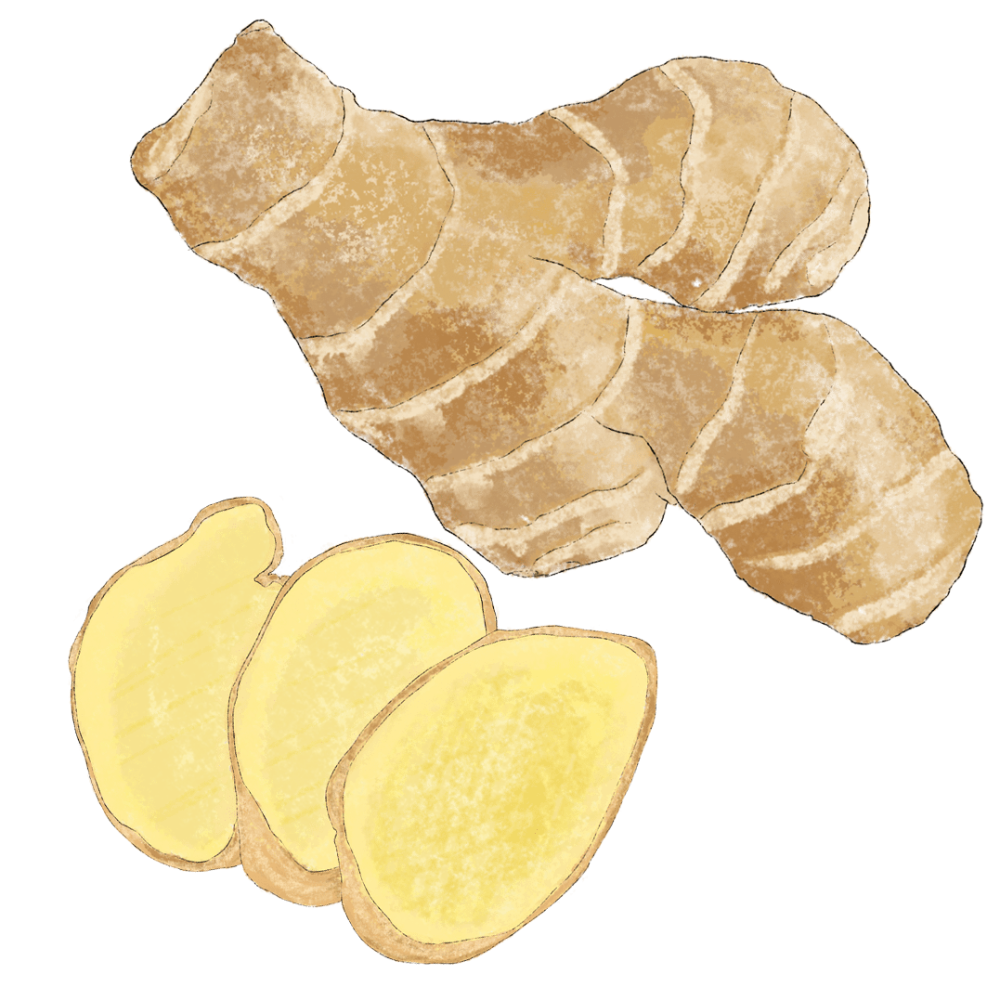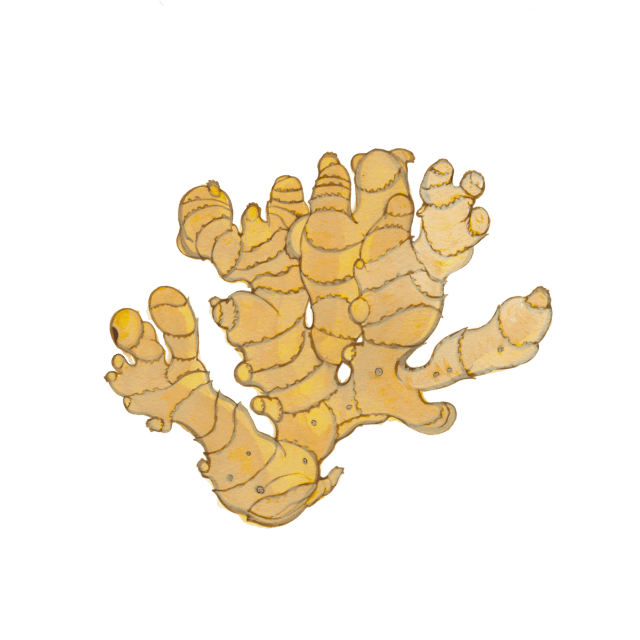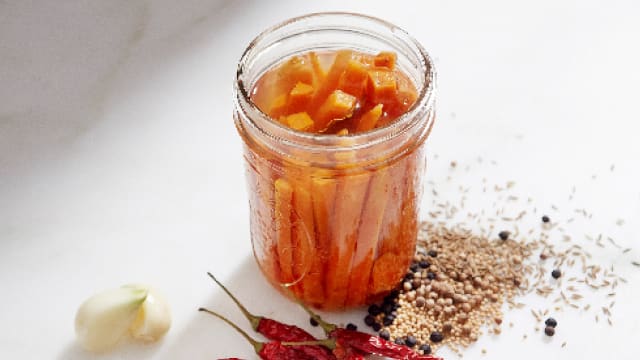Mango Ginger

Latin Name: Curcuma amada
Other Names: amba haldi, wild turmeric, white turmeric
Uses: spice, pickles, medicine
Mango ginger lives up to its evocative name. The “amada” in its binomen comes from the Bengali word for mango, and indeed, though it wears the skin of ginger and is about the size of its close cousin turmeric, this aromatic rhizome carries the unmistakable fragrance of unripe mangoes. A revered herb in South Asian traditional medicinal systems, mango ginger has firm, creamy white to pale yellow flesh.
Why is mango ginger healthy?
The rhizome is rich in curcuminoids, which have antioxidant, antibacterial, anti-inflammatory, anti-tubercular, and anti-cancer properties. A coolant that aids digestion and stimulates the appetite, in India it is a traditional remedy in Ayurveda and Unani medicine for coughs, colds, asthma, bronchitis, and skin problems such as inflammation or itching. The root’s paste is also applied topically to heal sprains and bruises.
What does mango ginger taste like?
With sweet, earthy, floral, and peppery undertones, mango ginger manifests a warm, winter afternoon in a bite. It has the fresh, zesty flavor of raw mango sans the lip-puckering tartness. Though milder than turmeric or ginger, it has hints of the earthiness and pungency of both.
Where does mango ginger grow?
Native to India, mango ginger is cultivated mainly in India and Malaysia. Fertile wetlands, partly shaded areas, and sunlight are essential for its growth in the wild and farmlands. In India, the herb grows in West Bengal, Gujarat, Tamil Nadu, Karnataka, the northeastern states, and the Konkan region. Due to the varying topography and climatic conditions across these areas, the rhizomes exhibit discernable diversity.
How do I prepare mango ginger and what do I pair it with?
When the fresh harvest hits the market in winter, bring out your pickling jars to preserve mango ginger in brine or vinegar. Always wash these rhizomes thoroughly and use them as you would fresh ginger or turmeric: grated, sliced, or julienned. The raw mango fragrance and flavor make an excellent base for a salad dressing, sauce, chutney, or smoothie. Add fresh mango ginger to teas, broth, mocktails, cocktails, and desserts. In India, the herb is used as a spice; it is grated and added to stir-fries, lentils, curries, and relishes. Some recipes also use it as a vegetable. Mango ginger pairs well with tofu, chicken, seafood, root vegetables, and tropical fruits. It is also available as a dried powder, which can be used in cooking or as a superfood in smoothies and other preparations.
Surprising fact:
The medicinal use of “Aamragandhi Haridraa” (mango ginger's Sanskrit name) is immortalized in Sanskrit poetry and ancient ayurvedic treatises. One Sanskrit verse in praise of the herb goes: “Raw mango-flavored ginger has a cooling effect on the body. It aggravates Vata / It also pacifies deranged Pitta, and cures all types of itching and skin diseases.”


